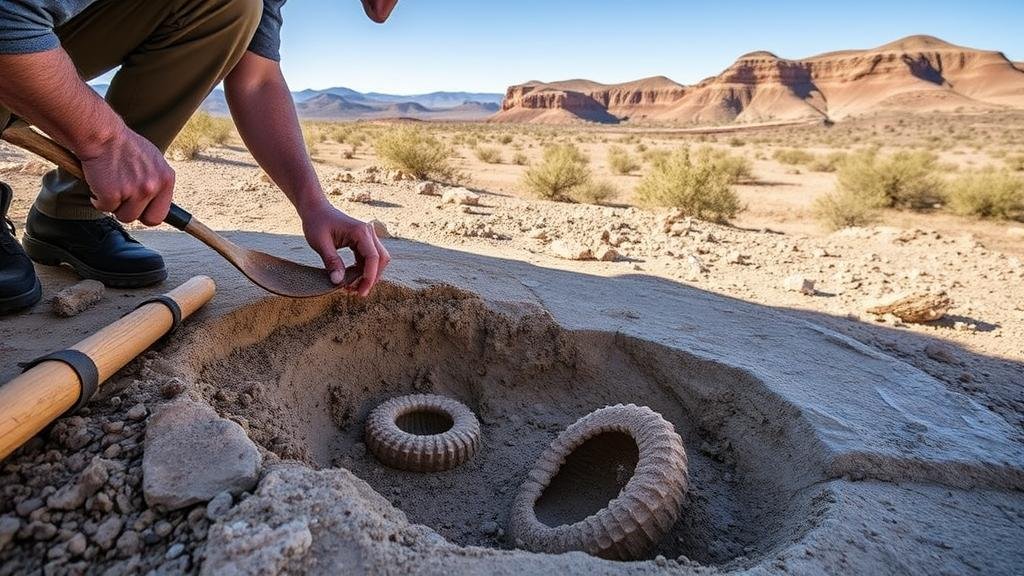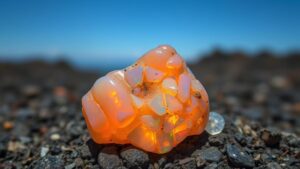Unearthing fossilized cephalopods in sedimentary layers near the Burro Mountains.
Unearthing Fossilized Cephalopods in Sedimentary Layers Near the Burro Mountains
The Burro Mountains, located in southwestern New Mexico, are renowned for their geological diversity and rich fossil deposits, particularly of cephalopods. Rockhounds and mineral collectors flock to this region to uncover the remnants of ancient marine life that thrived millions of years ago. This article delves into the fascinating world of fossilized cephalopods in sedimentary layers near the Burro Mountains, offering insights, tips, and practical information for enthusiasts in the field.
The Geological Background
The Burro Mountains are primarily composed of sedimentary rock, which has been subjected to various geological processes over the millennia. layers of rock in this region date back to the late Paleozoic through the Mesozoic eras, presenting a unique window into the history of the Earth. Fossilized cephalopods, including ammonites and nautiloids, are commonly found in these layers, offering clues about the evolutionary history of these intriguing creatures.
Cephalopods: An Overview
Cephalopods are a class of mollusks that include octopuses, squids, and cuttlefish, known for their remarkable cognitive abilities, complex behaviors, and unique anatomical features. Fossilized cephalopods are significant to paleontology for several reasons:
- Evolutionary Indicators: Fossils provide insight into environmental changes and the evolutionary adaptations of marine life over time.
- Biostratigraphy: Cephalopod fossils are used to date sedimentary layers and understand the chronological sequence of geological events.
Finding Fossilized Cephalopods
When searching for fossilized cephalopods in the Burro Mountains, certain strategies can significantly enhance your chances of success:
- Research Geological Maps: Familiarize yourself with the local geology by consulting geological maps that highlight sedimentary rock formations known to contain fossils.
- Focus on Specific Locations: Sites such as limestone outcrops and river beds often yield a higher concentration of fossilized remains.
- Timing Your Visits: Visiting after a rainstorm can expose new fossils, as erosion and water flow often reveal previously hidden specimens.
Identifying Fossilized Cephalopods
Recognizing fossilized cephalopods requires a keen eye and understanding of their characteristics. Common features include:
- Coiled Shells: Ammonites often exhibit coiled, chambered shells, while nautiloids possess smooth, spiral shells.
- Suture Patterns: The complexity of the suture lines, which are the marks left on the shell, can indicate the species and age of the fossil.
For example, the intricate suture patterns of ammonites can reveal the specific family they belong to, such as the smooth suture lines of Turrilites, indicating a relatively modern group of ammonites.
Preservation and Ethical Considerations
While collecting fossilized cephalopods can be rewarding, collectors should adhere to ethical guidelines to preserve these natural treasures for future generations. This includes:
- Leave No Trace: Take only what is necessary; avoid disturbing other fossilized specimens or the surrounding environment.
- Seek Permission: Always obtain permission if you are on private land and familiarize yourself with local laws regarding fossil collection.
Conclusion and Actionable Takeaways
The quest for fossilized cephalopods in the Burro Mountains can be an exhilarating and educational experience for rockhounds and mineral collectors alike. By understanding the geological context, employing effective searching strategies, and prioritizing ethical collecting practices, enthusiasts can unearth remarkable pieces of the Earths history.
Actionable Takeaways:
- Study geological maps and identify prime fossil-bearing locations.
- Learn the distinguishing features of cephalopod fossils for accurate identification.
- Practice responsible collecting habits to ensure sustainability in your hobby.
Happy hunting, and may your adventures in the Burro Mountains yield remarkable discoveries of fossilized cephalopods!



